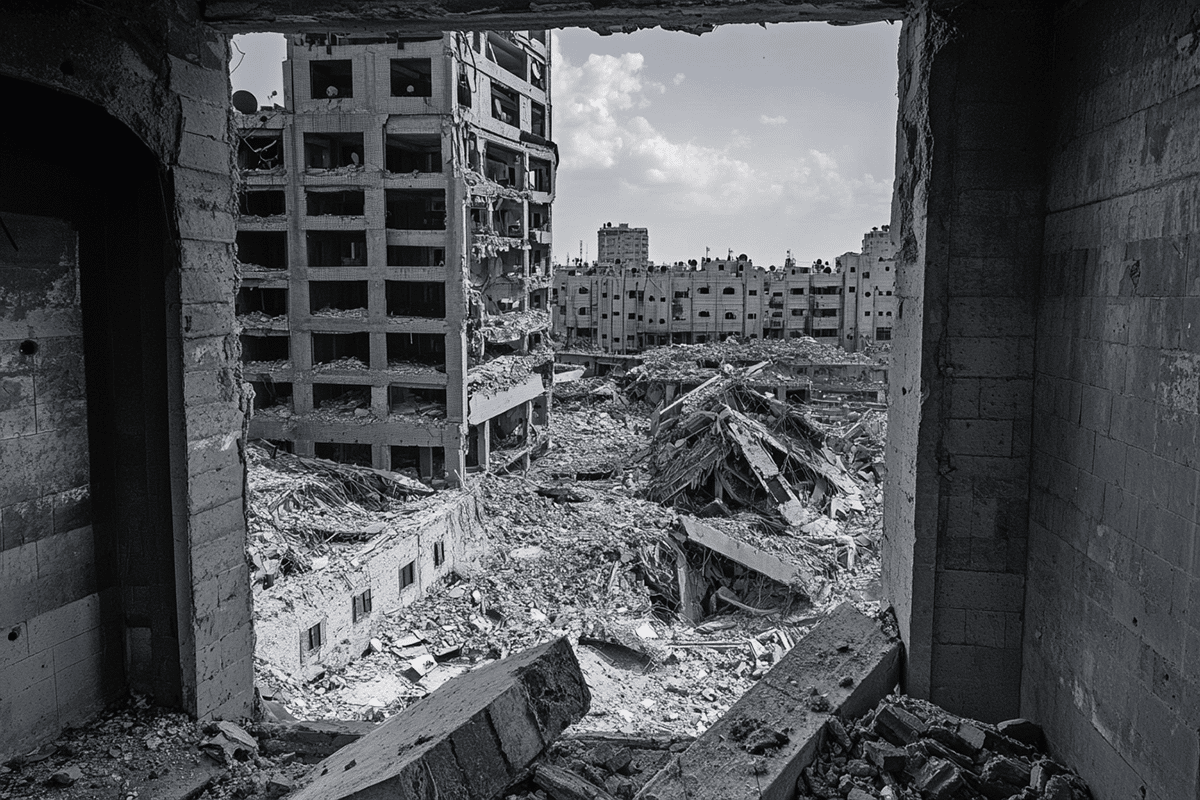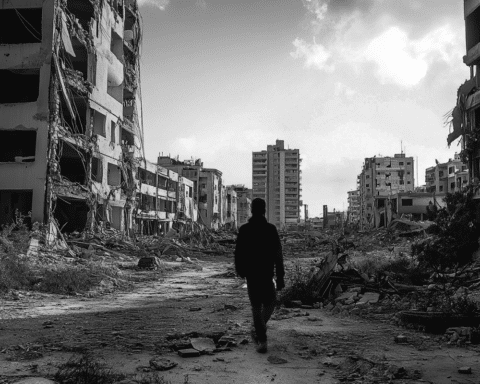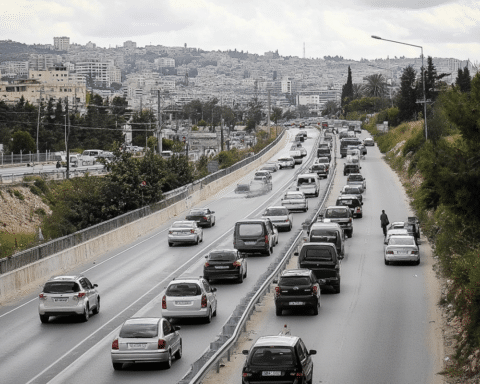Israeli airstrikes on Thursday resulted in the deaths of at least 26 people across the Gaza Strip, including security officers from Hamas and civilians in a humanitarian zone, as the conflict continues to escalate. This latest wave of bombardments further underscores the complexity of the ongoing war and the stalled efforts for a ceasefire.
Humanitarian Zone Hit Amid Airstrikes
In one of the deadliest attacks, an early morning Israeli airstrike targeted the Muwasi humanitarian zone, located along the coast of Gaza. The strike killed at least 10 people, including three children and two senior Hamas police officers. Muwasi had been sheltering hundreds of thousands of displaced people, many of whom were seeking refuge from the relentless violence in damp, cold conditions. The bombing occurred while people were inside their tents, seeking warmth, further intensifying the dire situation faced by those already displaced by the war.
This strike is part of Israel’s continued military campaign, which has repeatedly targeted Hamas leadership figures in Gaza. The Israeli military confirmed that one of the individuals killed was a senior officer involved in intelligence gathering for Hamas’ armed wing, which had been used to orchestrate attacks on Israeli forces.
Targeting Hamas Security Forces
The Israeli military also carried out airstrikes in other parts of Gaza, including a raid in Deir al-Balah, located in central Gaza. This attack claimed the lives of at least eight Palestinians, all of whom were members of local committees tasked with securing aid convoys in the region. These committees are crucial for delivering humanitarian aid to those in need, but their efforts have been increasingly hindered by the ongoing conflict.
Additionally, Israel launched another strike in southern Gaza, killing five policemen in the eastern region of Khan Younis. This attack specifically targeted the head of the Hamas internal security force in the area. Israeli officials noted that these strikes were part of ongoing efforts to dismantle Hamas’ infrastructure, which has contributed to a breakdown of law and order in Gaza. The loss of police forces has made it even more difficult for humanitarian organizations to operate effectively, further exacerbating the suffering of Gaza’s residents.
Civilian Casualties and Escalating Humanitarian Needs
The devastating toll of the ongoing airstrikes on Gaza continues to mount, with civilian casualties rising steadily. In another attack on Thursday, three Palestinians were killed in a strike on a group of people walking in the street in Maghazi, located in central Gaza. The bodies of the victims were transported to the Al-Aqsa Martyrs Hospital, underscoring the continued impact on civilians as the fighting intensifies.
The conflict, which began after Hamas-led militants launched a major attack on Israel on October 7, 2023, has now resulted in the deaths of over 45,000 Palestinians, according to Gaza’s Health Ministry. The overwhelming majority of those killed are women and children. Despite Israel’s claims that it targets only militants, its military actions continue to result in high civilian casualties, a situation worsened by Hamas’ presence in densely populated residential areas.
Meanwhile, the humanitarian crisis in Gaza has become increasingly dire, with widespread hunger affecting the population. Children are seen waiting in long lines for food at distribution centers, some barefoot, a stark reminder of the severe shortages plaguing the region. With approximately 90% of Gaza’s population displaced, many are enduring extreme conditions, exacerbating the toll of the war on civilians.
The War’s Unyielding Toll and Efforts for Ceasefire
The conflict shows no signs of easing, and despite efforts to negotiate a ceasefire, both sides remain focused on achieving their military goals. Israel’s offensive aims to dismantle Hamas, which remains active in parts of Gaza, particularly in the largely isolated northern regions. Though Israel has weakened the militant group, Hamas continues to regroup and resist, indicating that a long-term resolution is unlikely in the immediate future.
Israeli Prime Minister Benjamin Netanyahu, currently recovering from prostate surgery, has pledged to continue military operations until Hamas is eliminated. However, with the conflict continuing to ravage Gaza and humanitarian conditions worsening by the day, it remains unclear how much longer this cycle of violence will persist.
As the war drags on, the toll on both sides of the conflict continues to grow, with Gaza’s population bearing the brunt of the destruction. The need for an immediate ceasefire and a lasting peace agreement is more urgent than ever, as the humanitarian situation in Gaza reaches critical levels.





